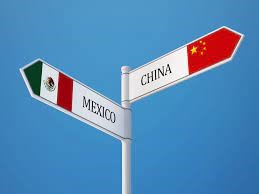Is Mexico the Next China and is this the Right Time to Invest?
They call it “nearshoring” or “reshoring” and it could represent attractive investment returns for the next decade and beyond.
According to Bank of America economists led by Carlos Capistran, “nearshoring represents Mexico’s best growth opportunity for the next 10 years and it is already occurring. Mexico’s manufacturing sector is booming. It has grown more than 5% year-to-date (YTD) in real terms. It is one of the few sectors that is already above pre-pandemic levels (+6%) and that is growing as a percentage of GDP.”
Nearshoring describes when a country outsources to another country across its border, and reshoring brings companies previously operating offshore closer to home. The benefits can be many–especially as Chinese governments continue ordering lockdowns.
The inflection point is of epic proportion, given the global turmoil—the US and China tariff war, Covid, and the war in Ukraine. Think about those images of ships backed up across the ocean and containers piled up in ports.
One of the best things about Latin America’s second-largest economy and our second-largest trade partner after Canada is, Mexican exports are transported by road to the U.S., avoiding the container- and port-related issues that continue to affect global shipping.
Another important point is China’s wages have risen beyond Mexico’s as a result of Beijing’s one-child policy coming home to roost–which was implemented in the late 1970s and lasted until 2016.
As the new manufacturing hub to replace China, the Inter-American Development Bank is leading the way, announcing it will be injecting between $1.75 and $2.25 billion to support nearshoring and reshoring projects in Mexico over the next three years.
The easiest way to get exposure to the broader Mexican stock market is the iShare MSCI Mexico ETF (EWW) which is up 1.8% YTD. However, we believe an active approach is a better way to go. CNBC Pro did a nice job of breaking down how you can get exposure through direct stock ownership.
Some of the companies they listed with YTD performance as of 11/2/2022.
- FirstCash up nearly (+ 28.5%)
- Sanmina up (+ 35.1%).
- PriceSmart down (- 7.3%)
- Ingredion (- 7.1%)
Keep in mind the S&P 500 is down 20.1% for the same period. Also, we recently sold FirstCash and Sanmina and currently own PriceSmart and Ingredion.
In their article, CNBC Pro mentions how one of our Inflection 5 companies, Tesla, “has the potential to benefit from this trend.”
In the above-mentioned article, Morgan Stanley’s Analyst Adam Jonas said, “The confluence of (a) energy transition and the Inflation Reduction Act (IRA) and (b) onshoring appears set to drive the biggest capex cycle of the century — the Mother of All Capex Cycles (aka the MACC). In our opinion, Tesla is in position to be the standard-setter of the ‘battery industrial age’ as it is the ‘most’ USMCA car company.”
We are excited about the potential Mexico provides. We’ll keep you updated as we explore ways to capitalize on this emerging opportunity as it unfolds.
Validus Growth Investors, LLC seeks to invest in companies at every stage of their growth. From startups to publicly traded companies, our research identifies inflection points that have the potential to produce meaningful growth and income for the clients we serve.
Investment Advisory Services are offered through Validus Growth Investors, LLC (“Validus”), an SEC Registered Investment Adviser. No offer is made to buy or sell any security or investment product. This is not a solicitation to invest in any security or any investment product of Validus. Validus does not provide tax or legal advice. Consult with your tax advisor or attorney regarding specific situations. Intended for educational purposes only and not intended as individualized advice or a guarantee that you will achieve a desired result. Opinions expressed are subject to change without notice. Investing involves risk, including the potential loss of principal. No investment can guarantee a profit or protect against loss in periods of declining value. All information is believed to be from reliable sources; however, we make no representation as to its completeness or accuracy. Opinions and projections are as of the date of their first inclusion herein and are subject to change without notice to the reader. As with any analysis of economic and market data, it is important to remember that past performance is no guarantee of future results.


